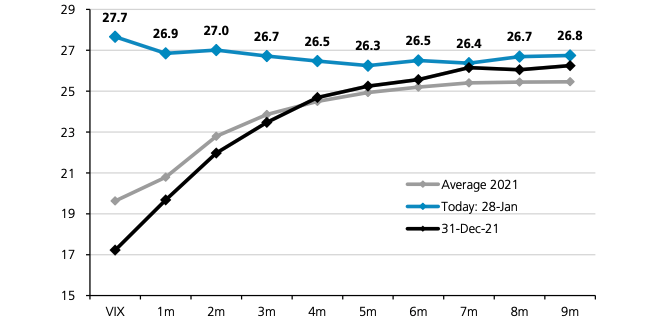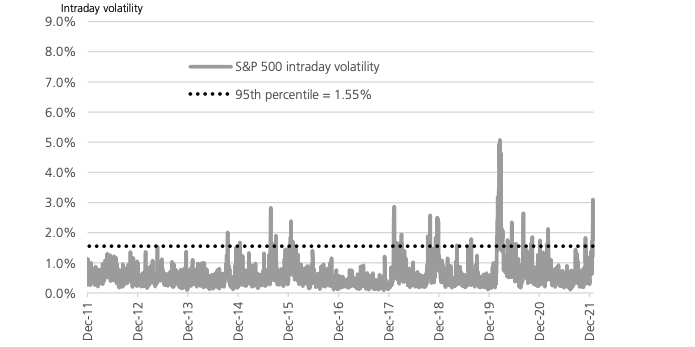
- UBS is warning investors to expect more choppy trading after a roller coaster ride in January.
- The strategists said inflation will peak in the next few months, hammer stocks further along the way.
- The bank highlighted three factors that will drive more volatility.
- Sign up here for our daily newsletter, 10 Things Before the Opening Bell.
UBS has a warning to investors licking their wounds after a hugely volatile January: expect more bumps ahead.
Entering the year, strategists Stuart Kaiser and Artour Danilov already expected risk and volatility to run higher in the first half of 2022 due to a hawkish Federal Reserve, slowing forward growth, and surging inflation.
Kicking off January's volatility was the central bank's policy statement that indicated it was on track to raise interest rates in March. While this was expected, it also signaled to the market that it would not be opposed to raising rates at every meeting of the Federal Open Market Committee this year to combat soaring inflation.
UBS economists see inflation peaking in the coming months, hammering stocks all along the way.
Here are three factors the analysts said point to more volatile trading ahead.
1. US equity volatility remains very high
Compared to other assets such as gold or emerging markets, US stocks ranked above the 90th percentile in terms of volatility. The strategists said they yet have to see a "capitulation moment for stocks or across assets."

2. Inverted VIX curve
The stock market's so-called "fear gauge" has been steeply inverted last week, and UBS pointed out that recovery from severe market disruptions has historically been slow and choppy.

3) Extreme intraday volatility
The wild swings in a single session was evidence of how stressed markets are, the strategists said, which have also been slow to fix. Each trading session last week featured extreme (>95th percentile) intraday volatility and was one of just 24 episodes lasting more than four days since 1982 with 11 taking place in 2008 and 2009, UBS strategists said.


